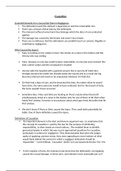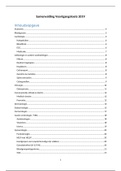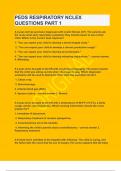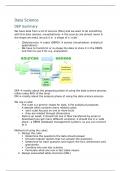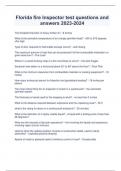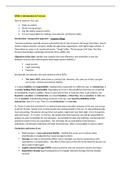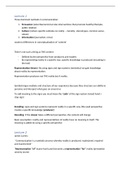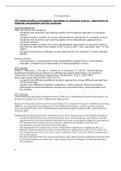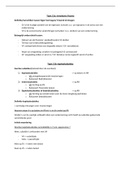Causation
Essential Elements for a Successful Claim in Negligence
The defendant owed the claimant a legal duty to exercise reasonable care.
There was a breach of that duty by the defendant.
The claimant suffered some harm/loss/damage which the duty of care protected
against.
The damage was caused by the breach and wasn’t too remote.
There are no defences that the defendant can establish (such as consent, illegality or
contributory negligence).
Who Caused the Injury?
Mary is hunting on her estate in Hove. She shoots at a noise in the bushes and hits
Verona who was visiting.
Mary, because no one else could’ve been responsible, no one else was involved. She
took a direct action and the consequence resulted.
Verona visits the hospital with a gunshot wound. She is seen by Dr Mark who
wrongly assumes the bullet has already exited the wound and as a result the leg
becomes infected and needs to be amputated whatever Dr Mark did.
Dr Mark had a duty of care, and he breached this duty. No matter what he would
have done, the same outcome would’ve been achieved. But for the breach of duty,
the harm wouldn’t have occurred.
Sometime later, Mary and Sirko are hunting on Mary’s estate when they both
simultaneously shoot at a noise in the bushes only for one of them to hit their other
friend Prof Lindsay. Forensics is inconclusive about which gun fired the bullet that hit
Prof Lindsay.
We don’t know if Mary or Sirko caused the injury. They could both potentially be
liable. One of them definitely caused the injury.
Definitions of Causation
‘An important element in the Hart and Honore argument was…to emphasise that
the concept of causation is used by the law for the purpose of attributing
responsibility…is often based on moral notions…This enabled them to identify
general principles in which the way courts approached questions for causation,
particularly in actions for negligence. They demonstrated that when the judges
spoke of applying common sense, they were appealing to moral notions of what
would fairly delimit the events for which a negligent defendant should be
responsible’ – Lord Hoffman, ‘Causation’ (2005) 121 Law Quarterly Review 592, 594.
‘In the majority of torts, the claimant must show that the defendant’s wrongdoing
caused him actual damage. In these torts, and indeed in torts actionable per se if
, substantial damages are sought, the claimant must establish that: (1) the
defendant’s conduct did in fact result in the damage of which he complains; and (2)
the damage is not in law too remote a consequence of the defendant’s
wrongdoing…Factual causation is concerned between the defendant’s wrong and
the claimant’s damage…(Cause in law and remoteness concerns) the operative or
effective cause of the loss for the purpose of attributing legal responsibility…(and)
there are value judgements involved in making a selection’ – Clerk & Lindsell, 2-01 –
2-06.
‘But-For’ Test
Barnett v Chelsea and Kensington Hospital (1969) 1 QB 428.
Mr Barnett went to hospital complaining of severe stomach pains and vomiting. He
was seen by a nurse who telephoned the doctor on duty.
The doctor told her to send him home and contact his GP in the morning. Mr Barnett
died five hours later from arsenic poisoning.
Had the doctor examined Mr Barnett at the time there would have been nothing the
doctor could have done to save him.
The doctor identified that he was negligent.
The hospital was not liable as the doctor's failure to examine the patient did not
cause his death. There would have been no way to treat the arsenic poisoning.
Introduced the 'but for' test i.e. would the result have occurred but for the act or
omission of the defendant? If yes, the defendant is not liable.
Wilsher v Essex Area Health Authority (1988) 1 All ER 871.
A premature baby was given too much oxygen by a junior doctor. The baby suffered
from a condition affecting his retina which left him totally blind in one eye and
partially sighted in the other.
The condition could have been caused by the excess oxygen he had been exposed to
or it could have been caused by four other factors unrelated to the oxygen, but
related to the premature birth. The trial judge found the Health Authority liable. He
applied McGhee v NCB but stated that McGhee had reversed the burden of proof
where there were more than one possible causes.
The Health Authority appealed and the appeal was allowed.
There were 5 possible causes of this, so a 20% chance that the doctor’s negligence
affected this. There needs to be 51% chance for the but-for test.
The defendant was in breach of duty. A junior doctor owes the same standard of
care as a qualified doctor. McGhee did not reverse the burden of proof which always
remains on the claimant.
Hotson v East Berkshire Health Authority (1987) AC 750 (HL).
, The claimant as a school boy fell out of a tree from a height of 12 foot. He suffered a
fracture to his hip and was taken to hospital.
The hospital failed to diagnose his fracture and sent him home. He was in severe
pain so he was taken back to hospital 5 days later where an X ray revealed his injury.
He was treated and suffered an avascular necrosis which resulted in him having a
permanent disability and a virtual certainty that he would develop osteoarthritis.
According to medical evidence, had he been correctly diagnosed initially there was a
75% chance that he would have still developed this condition, but there was a 25%
chance that he would have made a full recovery.
The trial judge awarded damages of £11,500 based of 25% of £46,000 which was
what would have been awarded if the claimant had shown that the defendant's
conduct had caused the avascular necrosis of the hip.
The claimant had failed to establish on the balance of probabilities that the
defendant's breach of duty had caused the necrosis since there was a 75% chance
that it was caused by the fall. Therefore, the claimant was not entitled to receive
anything in respect of the necrosis.
Gregg v Scott (2005) UKHL 2 WLR 268, per Lord Nichols
The claimant found a lump under his arm. He Consulted his doctor who negligently
diagnosed it as innocuous when in fact it was cancerous.
This led to a nine-month delay in the claimant receiving treatment. During this
period, the claimant's condition deteriorated and the cancer spread.
This reduced his prospect of disease free survival from 42% to 25%. The delay also
caused the claimant to undergo immediate high dose chemotherapy.
The claimant brought an action based on his loss of a chance of survival.
Loss of a chance is not a recoverable head of damage in medical negligence claims.
‘A patient is suffering from cancer. His prospects are uncertain. He has a 45% chance
of recovery. Unfortunately, his doctor negligently misdiagnoses his condition. So, the
necessary treatment is delayed for months. As a result, the patient's prospects of
recovery become nil or almost nil. Has the patient a claim for damages against the
doctor? No, the House was told. The patient could recover damages if his initial
prospects of recovery had been more than 50%. But because they were less than
50% he can recover nothing. This surely cannot be the state of the law today. It
would be irrational and indefensible. The loss of a 45% prospect of recovery is just as
much a real loss for a patient as the loss of a 55% prospect of recovery. In both cases
the doctor was in breach of his duty to his patient. In both cases the patient was
worse off. I would hold that a patient has a right to a remedy as much where his
prospects of recovery were less than 50-50 as where they exceeded 50-50’.
‘This appeal raises a question which has divided courts and commentators
throughout the common law world. The division derives essentially from different
perceptions of what constitutes injustice in a common type of medical negligence
case. Some believe a remedy is essential and that a principled ground for providing
an appropriate remedy can be found. Others are not persuaded. I am in the former
camp’.
Sanderson v Hull (2008 EWCA Civ 1211.
Wooton v J Docter (2008) EWCA Civ 1361.
Essential Elements for a Successful Claim in Negligence
The defendant owed the claimant a legal duty to exercise reasonable care.
There was a breach of that duty by the defendant.
The claimant suffered some harm/loss/damage which the duty of care protected
against.
The damage was caused by the breach and wasn’t too remote.
There are no defences that the defendant can establish (such as consent, illegality or
contributory negligence).
Who Caused the Injury?
Mary is hunting on her estate in Hove. She shoots at a noise in the bushes and hits
Verona who was visiting.
Mary, because no one else could’ve been responsible, no one else was involved. She
took a direct action and the consequence resulted.
Verona visits the hospital with a gunshot wound. She is seen by Dr Mark who
wrongly assumes the bullet has already exited the wound and as a result the leg
becomes infected and needs to be amputated whatever Dr Mark did.
Dr Mark had a duty of care, and he breached this duty. No matter what he would
have done, the same outcome would’ve been achieved. But for the breach of duty,
the harm wouldn’t have occurred.
Sometime later, Mary and Sirko are hunting on Mary’s estate when they both
simultaneously shoot at a noise in the bushes only for one of them to hit their other
friend Prof Lindsay. Forensics is inconclusive about which gun fired the bullet that hit
Prof Lindsay.
We don’t know if Mary or Sirko caused the injury. They could both potentially be
liable. One of them definitely caused the injury.
Definitions of Causation
‘An important element in the Hart and Honore argument was…to emphasise that
the concept of causation is used by the law for the purpose of attributing
responsibility…is often based on moral notions…This enabled them to identify
general principles in which the way courts approached questions for causation,
particularly in actions for negligence. They demonstrated that when the judges
spoke of applying common sense, they were appealing to moral notions of what
would fairly delimit the events for which a negligent defendant should be
responsible’ – Lord Hoffman, ‘Causation’ (2005) 121 Law Quarterly Review 592, 594.
‘In the majority of torts, the claimant must show that the defendant’s wrongdoing
caused him actual damage. In these torts, and indeed in torts actionable per se if
, substantial damages are sought, the claimant must establish that: (1) the
defendant’s conduct did in fact result in the damage of which he complains; and (2)
the damage is not in law too remote a consequence of the defendant’s
wrongdoing…Factual causation is concerned between the defendant’s wrong and
the claimant’s damage…(Cause in law and remoteness concerns) the operative or
effective cause of the loss for the purpose of attributing legal responsibility…(and)
there are value judgements involved in making a selection’ – Clerk & Lindsell, 2-01 –
2-06.
‘But-For’ Test
Barnett v Chelsea and Kensington Hospital (1969) 1 QB 428.
Mr Barnett went to hospital complaining of severe stomach pains and vomiting. He
was seen by a nurse who telephoned the doctor on duty.
The doctor told her to send him home and contact his GP in the morning. Mr Barnett
died five hours later from arsenic poisoning.
Had the doctor examined Mr Barnett at the time there would have been nothing the
doctor could have done to save him.
The doctor identified that he was negligent.
The hospital was not liable as the doctor's failure to examine the patient did not
cause his death. There would have been no way to treat the arsenic poisoning.
Introduced the 'but for' test i.e. would the result have occurred but for the act or
omission of the defendant? If yes, the defendant is not liable.
Wilsher v Essex Area Health Authority (1988) 1 All ER 871.
A premature baby was given too much oxygen by a junior doctor. The baby suffered
from a condition affecting his retina which left him totally blind in one eye and
partially sighted in the other.
The condition could have been caused by the excess oxygen he had been exposed to
or it could have been caused by four other factors unrelated to the oxygen, but
related to the premature birth. The trial judge found the Health Authority liable. He
applied McGhee v NCB but stated that McGhee had reversed the burden of proof
where there were more than one possible causes.
The Health Authority appealed and the appeal was allowed.
There were 5 possible causes of this, so a 20% chance that the doctor’s negligence
affected this. There needs to be 51% chance for the but-for test.
The defendant was in breach of duty. A junior doctor owes the same standard of
care as a qualified doctor. McGhee did not reverse the burden of proof which always
remains on the claimant.
Hotson v East Berkshire Health Authority (1987) AC 750 (HL).
, The claimant as a school boy fell out of a tree from a height of 12 foot. He suffered a
fracture to his hip and was taken to hospital.
The hospital failed to diagnose his fracture and sent him home. He was in severe
pain so he was taken back to hospital 5 days later where an X ray revealed his injury.
He was treated and suffered an avascular necrosis which resulted in him having a
permanent disability and a virtual certainty that he would develop osteoarthritis.
According to medical evidence, had he been correctly diagnosed initially there was a
75% chance that he would have still developed this condition, but there was a 25%
chance that he would have made a full recovery.
The trial judge awarded damages of £11,500 based of 25% of £46,000 which was
what would have been awarded if the claimant had shown that the defendant's
conduct had caused the avascular necrosis of the hip.
The claimant had failed to establish on the balance of probabilities that the
defendant's breach of duty had caused the necrosis since there was a 75% chance
that it was caused by the fall. Therefore, the claimant was not entitled to receive
anything in respect of the necrosis.
Gregg v Scott (2005) UKHL 2 WLR 268, per Lord Nichols
The claimant found a lump under his arm. He Consulted his doctor who negligently
diagnosed it as innocuous when in fact it was cancerous.
This led to a nine-month delay in the claimant receiving treatment. During this
period, the claimant's condition deteriorated and the cancer spread.
This reduced his prospect of disease free survival from 42% to 25%. The delay also
caused the claimant to undergo immediate high dose chemotherapy.
The claimant brought an action based on his loss of a chance of survival.
Loss of a chance is not a recoverable head of damage in medical negligence claims.
‘A patient is suffering from cancer. His prospects are uncertain. He has a 45% chance
of recovery. Unfortunately, his doctor negligently misdiagnoses his condition. So, the
necessary treatment is delayed for months. As a result, the patient's prospects of
recovery become nil or almost nil. Has the patient a claim for damages against the
doctor? No, the House was told. The patient could recover damages if his initial
prospects of recovery had been more than 50%. But because they were less than
50% he can recover nothing. This surely cannot be the state of the law today. It
would be irrational and indefensible. The loss of a 45% prospect of recovery is just as
much a real loss for a patient as the loss of a 55% prospect of recovery. In both cases
the doctor was in breach of his duty to his patient. In both cases the patient was
worse off. I would hold that a patient has a right to a remedy as much where his
prospects of recovery were less than 50-50 as where they exceeded 50-50’.
‘This appeal raises a question which has divided courts and commentators
throughout the common law world. The division derives essentially from different
perceptions of what constitutes injustice in a common type of medical negligence
case. Some believe a remedy is essential and that a principled ground for providing
an appropriate remedy can be found. Others are not persuaded. I am in the former
camp’.
Sanderson v Hull (2008 EWCA Civ 1211.
Wooton v J Docter (2008) EWCA Civ 1361.

